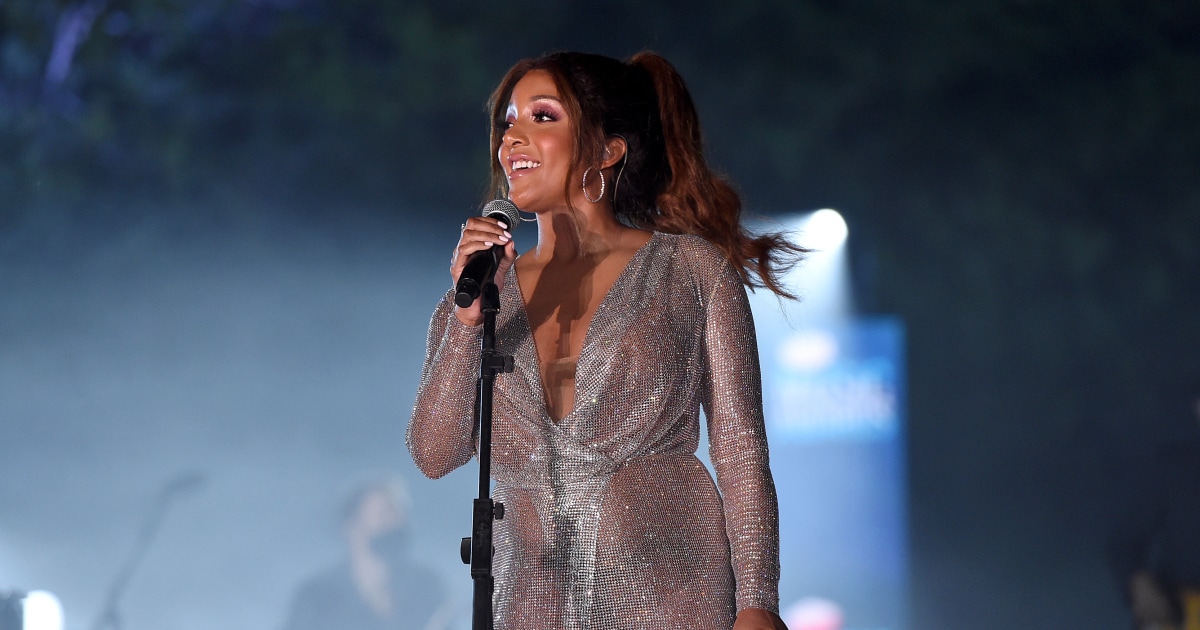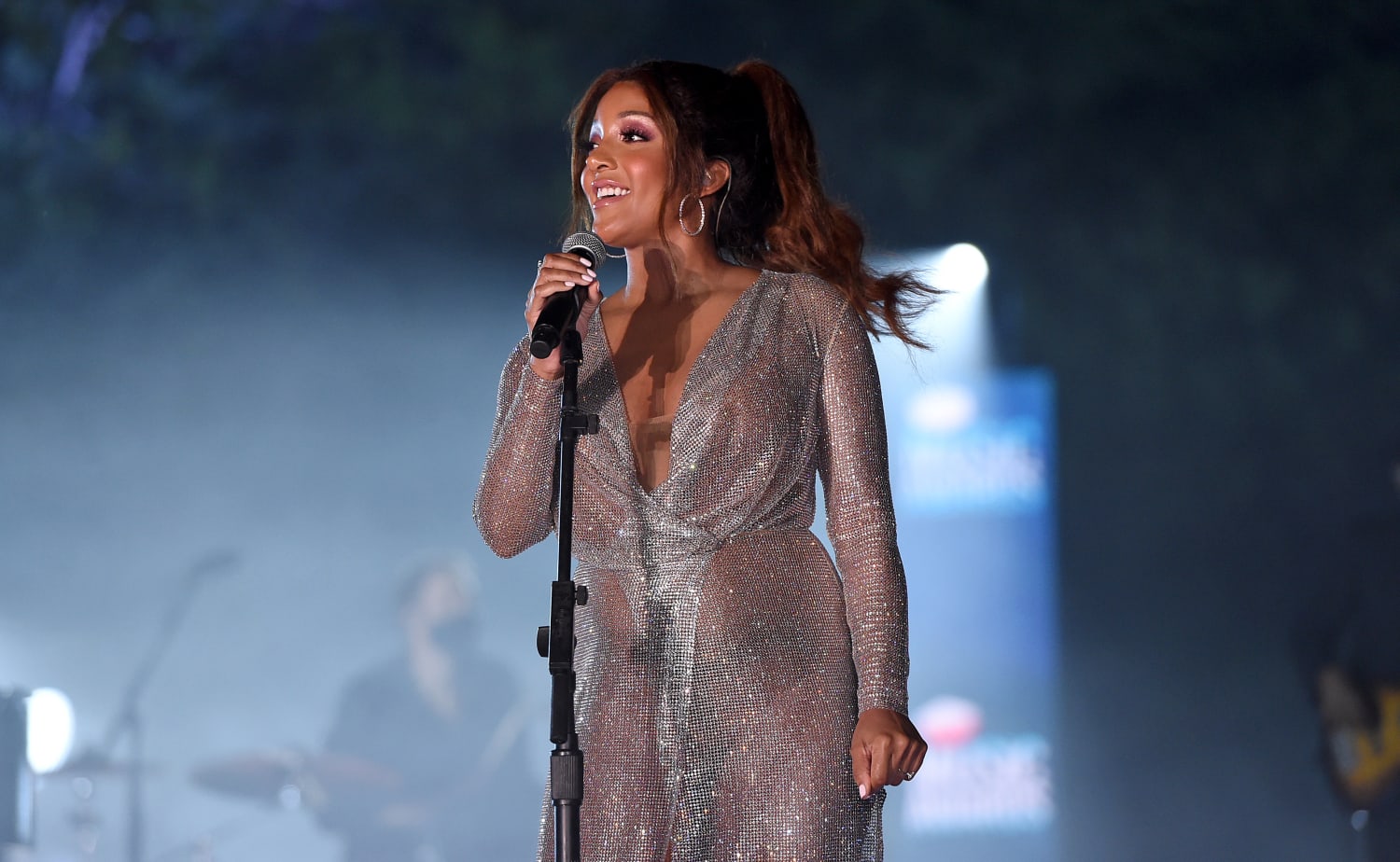
Capitol Nashville recording artist Mickey Guyton is making history at the 63rd Grammy Awards this weekend as the first Black solo female artist to earn a Grammy nomination in a country music category. The nominated song, her autobiographical single “Black Like Me,” details the singer’s experiences growing up as a Black woman in America. But not only is Guyton nominated for a song about the Black experience in an exclusionary genre such as country music, she’s done so without the support of country radio.
Mickey Guyton is making history this weekend, as the first Black solo female artist to earn a Grammy nomination in a country music category.
2020 was a critical year for Guyton. Five years after she released her debut single “Better Than You Left Me,” which country radio mostly dropped after just a few months of airplay, Guyton made a surprise appearance at the annual Country Radio Seminar to perform “What Are You Gonna Tell Her?” An indictment of gender disparities in society, the song spoke pointedly to her audience about the radio industry’s role in marginalizing women, artists of color and LGBTQ+ individuals within the industry. In a panel discussion following the performance, one program director praised the song and indicated that if he had the track, he would play it immediately. Guyton’s team rushed the demo to production and released the single on March 6, 2020.
And yet, despite seeming enthusiasm for the song, it failed to gain traction on the radio, appearing most often in the middle of the night, according to my recent report, “Redlining in Country Music.”
This scenario occurred again with Guyton’s singles “Black Like Me” and “Heaven Down Here.” According to my research, Guyton’s three singles received a combined 0.01 percent of the annual airplay in 2020 (around 70 percent of which fell in the evenings and overnight). It was played just enough for programmers to say they tried, but not enough for the song to have a real chance to be heard by country radio audiences. Despite this, Guyton’s music is garnering praise for the range of important social issues it addresses. And now, the Grammys may reward that depth with a golden statue.
This story — of a song with critical acclaim that struggles to get radio airplay — is all too common in the country music industry. More specifically, it’s all too familiar for non-white women and LGBTQ+ artists, who have historically been relegated to the margins of the industry.
To this day, Linda Martell’s “Color Him Father” remains the highest-ranking song by a Black female artist, having peaked at #22 on the Billboard chart in 1969.
The U.S. popular music industry formed in the 1920s along a musical color line that echoed Jim Crow segregation. Even though Black and white musicians played and listened to the same music, when record executives began recording popular songs for mass sale, they created two categories — “hillbilly” and “race” records — through which they would market music to white and Black communities, respectively.
While these specific marketing categories are no longer used today (replaced over time with “country” and “R&B”), the racial segregation on which the industry was founded has been reinforced through the development of the recording industry, the centralization of country music business in Nashville, the creation of radio formats and the development and continued maintenance of the industry’s popularity charts.
These are not historic issues; they are contemporary issues. As my new report shows, over the last two decades, just 1.4 percent of the country artists with songs played on U.S. country radio are Black, Indigenous and people or color (BIPOC), 0.6 percent of whom are Black artists and 0.8 percent of whom are biracial, Indigenous, Hispanic/Latinx or Asian American.
In a study of representation through airplay, I found that just 2.3 percent of the overall airplay between 2002 and 2020 featured songs by non-white artists. Although there has been an increase from 0.3 percent of the annual airplay in 2002 to 4.8 percent by 2020, the majority of this airplay occurred in the last decade and almost entirely for the songs of three men: Darius Rucker, Kane Brown and Jimmie Allen.
In the context of an industry that already has a well-documented gender imbalance, it should not be surprising to know that BIPOC women are the most underrepresented.
This type of programming does not just marginalize BIPOC women, it “redlines” their music. Redlining is a term most often used to describe how Black homeowners were pushed into segregated neighborhoods. But data scientists are now using this term to capture the ways in which algorithms directly or indirectly use criteria like race, gender and sexuality to make assessments. Something similar is happening in country music, where industry data is being used to make programming decisions that result in specific artists being pushed into time slots that have the lowest percentage of listeners, i.e. when the majority of the listening audience is sleeping.
If radio is not going to play songs by BIPOC women, then labels are not going to sign and invest in them or promote their music.
In a world in which streaming is becoming the common mode of music discovery, why does radio airplay still matter? Because it remains a gatekeeper for much of the industry, and still holds a lot of power over the sound and culture of popular country artists. If radio is not going to play songs by BIPOC women, then labels are not going to sign and invest in them or promote their music with the same intensity they do white artists. (It is critical to note that Mickey Guyton is the only Black female artist signed to a major Nashville label, and despite 10 years on Capitol Nashville, she has yet to be offered the opportunity to record a full album.)
And the radio industry also helps determine awards. Country music redlining ensures that non-white artists struggle to be heard by radio listeners. But a lack of airplay also depresses songs’ ability to move up the country music charts, which in turn renders songs ineligible for country industry awards — awards that are based on chart success. These issues, of course, extend to artists that the industry does not deem to be country, as was the case with Beyoncé’s “Daddy Lessons” and Lil Nas X’s “Old Town Road.”
Scholar George Lipsitz talks a lot about the “possessive investment in whiteness.” His work on social movements and identity politics has found that public policy and individual prejudice are together responsible for the racial hierarchies that persist within society. And his critique of social structures in the U.S. provides a perfect foil for understanding how the country industry works. As in Lipsitz’s case studies, whiteness has “cash value” in the country music industry. This accounts for advantages that come to white artists who profit directly or indirectly from discriminatory programming practices.
This is evident not just in programming, but also through inherited criteria that “pass on the spoils of discrimination to succeeding generations.” In a capitalistic enterprise such as the country music industry, the business model becomes a self-fulfilling prophecy: it encourages investment in whiteness, because whiteness remains integral to upholding the identity politics that provides financial advantages.
But the advantages that come from maintaining this white investment do not outweigh the benefits of dismantling white supremacy. Not only is the industry shutting out non-white artists, it is also cutting off a fanbase starving for inclusive and diverse representation.
It’s been a long wait for Guyton, who has spent a decade paying her dues and working the Nashville system only to have the system ignore her. On Sunday, she will perform “Black Like Me” on the Grammy stage. Hopefully the industry will finally realize what it’s been missing all along.
Source: | This article originally belongs to Nbcnews.com









